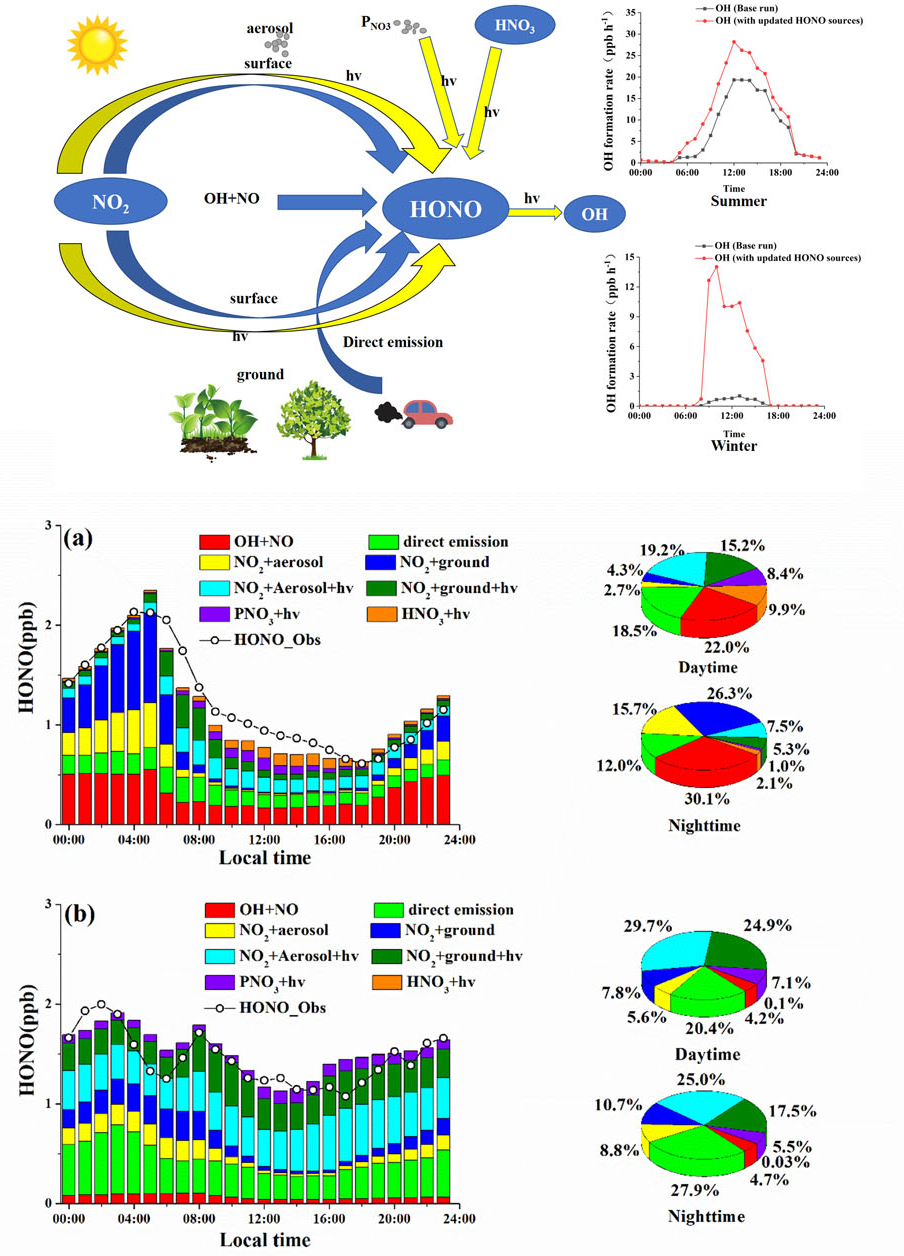
Atmospheric nitrous acid (HONO) is an important source of tropospheric hydroxyl radicals (OH). During daytime, sunlight turns HONO into hydroxyl radicals. This process may make up as high as 60% of the total tropospheric hydroxyl radicals, providing the essential atmospheric oxidation capacity driving the formation of secondary aerosol and the occurrence of regional haze pollution.
However, the source of gaseous nitrous acid has not been fully clarified, especially for its heterogeneous formation process, and the detailed budget of HONO in the polluted environments of megacities of China remains questionable.
To understand the detailed budget of HONO and its potential contribution to atmospheric oxidation in the megacity of Beijing, a team from the Institute of Atmospheric Physics (IAP) of the Chinese Academy of Sciences carried out HONO measurements in urban Beijing. The team also used a wide range of parameters and conducted detailed modeling study by coupling a series of heterogeneous sources of HONO.
"We find the current atmospheric photochemical mechanism is unable to explain the observed high concentration of gaseous nitrous acid," said Associate Professor LIU Zirui, the corresponding author of a study published in Atmospheric Environment.
In order to explore the potential sources and formation pathways of HONO, LIU and his team used a zero-dimensional box model (F0AM) based on MCM3.3.1 coupled with six updated HONO sources to reveal the HONO chemistry and its impact on atmospheric oxidation capacity.

Schematic diagram of HONO generation and photolysis; Daily variation of the concentration of various sources, and the percentage of daytime and nighttime contribution from different sources in (a)summer and (b) winter campaign (Image by LIU Zirui)
The model results showed that the heterogeneous reaction of NO2 on various surfaces (mainly aerosol surfaces) was the main source for the observed HONO. In addition, surprisingly high OH oxidation rates were simulated in the winter campaign, which was significantly underestimated in current MCM. This finding highlights the urgent need for full consideration of additional HONO sources in the numerical model, especially in the cases of winter haze in megacities of North China.
The work was supported by the Ministry of Science and Technology of China and the National Natural Science Foundation of China.

86-10-68597521 (day)
86-10-68597289 (night)

86-10-68511095 (day)
86-10-68512458 (night)

cas_en@cas.cn

52 Sanlihe Rd., Xicheng District,
Beijing, China (100864)

